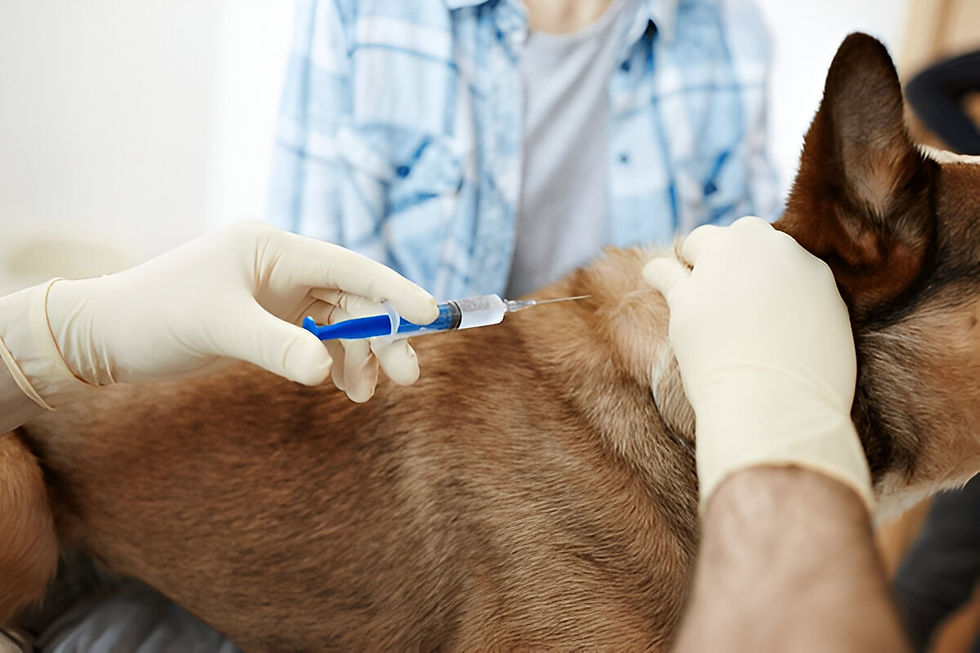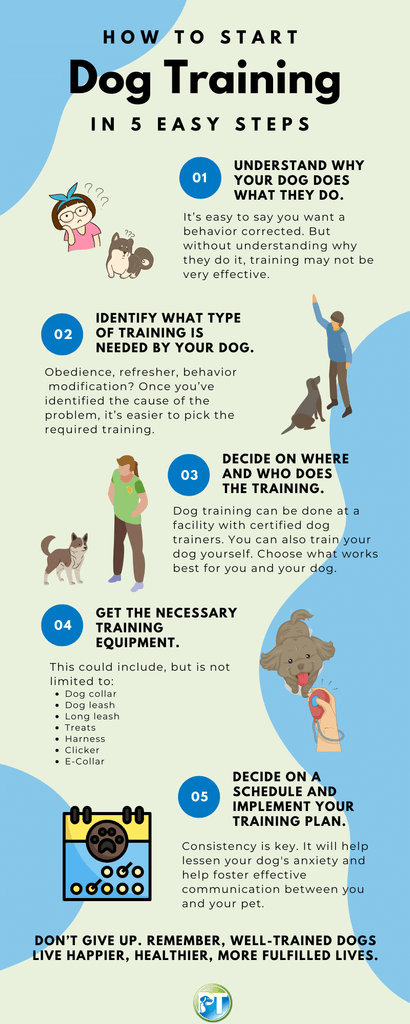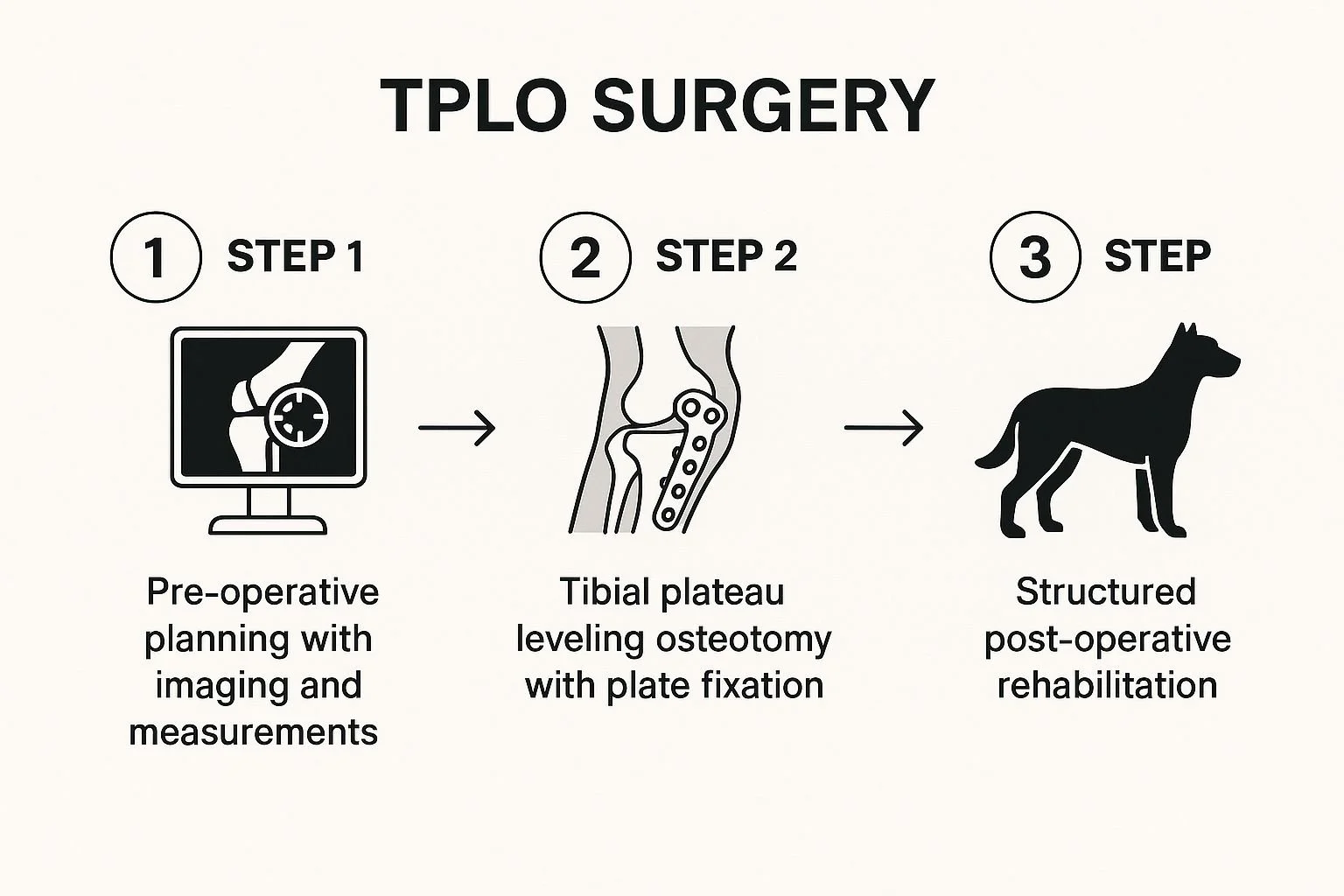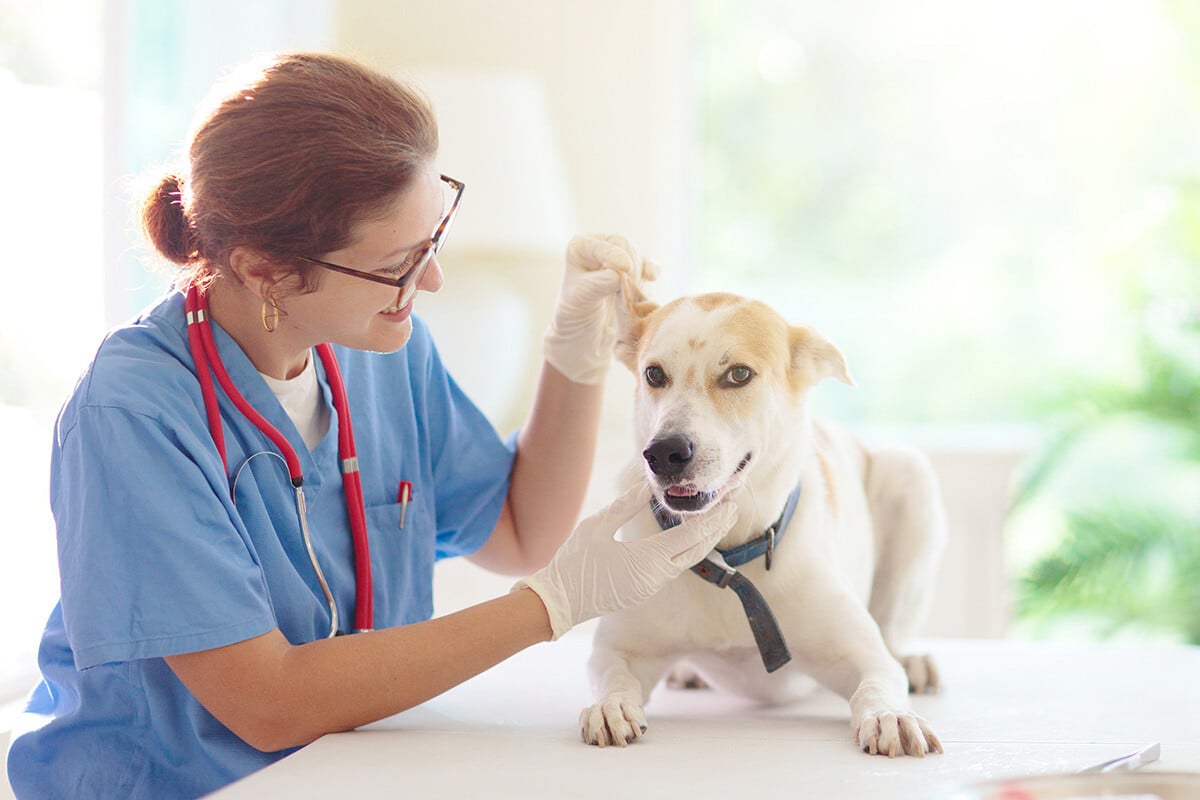Is your dog scratching more than usual or showing signs of discomfort? Allergies could be the hidden cause, but how do vets actually find out if your furry friend is allergic?
Understanding the testing process can help you get the right treatment faster and ease your dog’s discomfort. You’ll discover the simple and effective ways vets test for allergies in dogs—so you can take confident steps toward your pet’s health and happiness.
Keep reading to learn what to expect and how these tests work for your dog’s well-being.
Common Dog Allergies
Dogs can suffer from several types of allergies that affect their skin, digestion, and overall health. Recognizing common dog allergies helps vets find the right tests and treatments. These allergies often cause itching, redness, and discomfort in dogs.
Understanding the main categories of allergies helps pet owners notice symptoms early and seek veterinary care promptly.
Food Allergies
Food allergies occur when a dog’s immune system reacts to certain ingredients. Common triggers include beef, chicken, dairy, and grains. Symptoms may include itching, ear infections, vomiting, and diarrhea. Vets often recommend an elimination diet to identify the problem food.
Environmental Allergies
Environmental allergies arise from substances like pollen, dust mites, mold, or grass. These allergens cause itching, sneezing, and watery eyes. Dogs may scratch or lick their paws often. Vets may perform skin or blood tests to detect specific environmental allergens.
Flea Allergy Dermatitis
Flea allergy dermatitis is a reaction to flea saliva after a bite. It causes intense itching, hair loss, and red skin. Even a few flea bites can cause severe symptoms. Vets check for fleas and recommend flea control treatments to relieve the allergy.
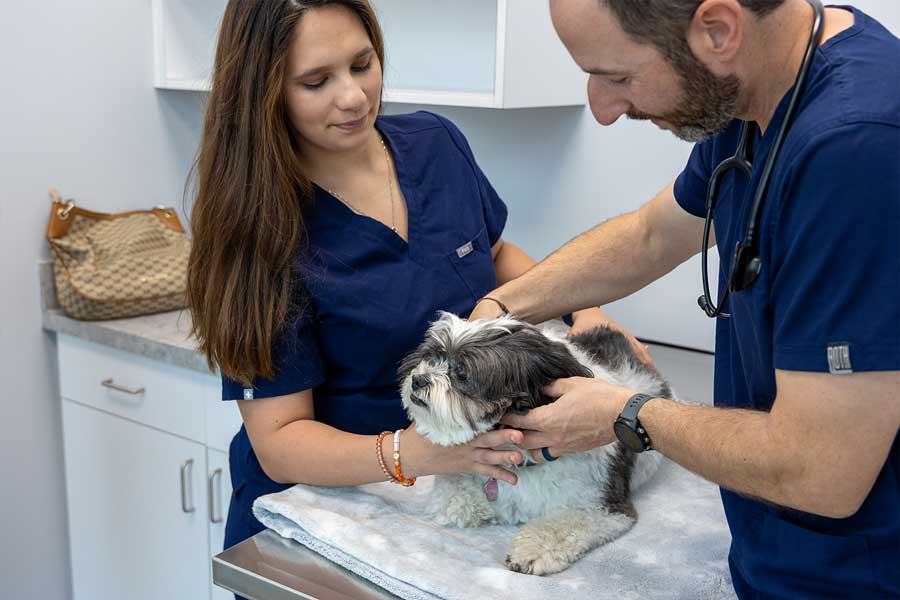
Credit: www.bluewatersah.com
Symptoms Of Allergies In Dogs
Recognizing the symptoms of allergies in dogs is crucial for timely diagnosis and treatment. Allergies can affect your dog in different ways, often showing up in their skin, digestion, or breathing. Watching closely for these signs can help you decide when to visit the vet and get your furry friend tested.
Skin Irritations
One of the most common signs of allergies in dogs is skin irritation. You might notice your dog scratching, licking, or biting certain areas excessively. Redness, swelling, or even hair loss can appear, especially around the paws, ears, and face.
These symptoms often look like simple itchiness but can quickly worsen if ignored. Have you ever seen your dog obsessively chew a spot and wondered why? It could be a hidden allergy causing discomfort.
Digestive Issues
Allergies don’t always show on the skin; sometimes, they affect your dog’s stomach and intestines. Diarrhea, vomiting, or frequent gas might point to a food allergy or intolerance. Changes in appetite or weight loss can also be subtle signals of trouble.
If your dog’s digestive system seems off after eating, consider what ingredients might be triggering a reaction. Could the new treat or food ingredient be the culprit?
Respiratory Problems
Respiratory symptoms in dogs with allergies can be surprising and easy to overlook. Sneezing, coughing, wheezing, or nasal discharge may indicate an allergic response. These signs often resemble a cold but persist longer and can affect your dog’s energy levels.
Does your dog seem to struggle with breathing after walks or exposure to certain environments? This might be more than just exercise intolerance—it could be allergies at play.
Physical Exam And History
The physical exam and history form the first crucial step in testing for allergies in dogs. This process helps vets gather vital clues about your pet’s health and environment. It also guides the next steps in diagnosing the allergy type and source.
During the physical exam, vets carefully check your dog’s skin, ears, eyes, and coat. They look for signs like redness, swelling, or hair loss. These clues point to possible allergic reactions.
History taking involves asking detailed questions about your dog’s habits, diet, and environment. This information helps identify triggers that might cause allergic symptoms.
Behavioral Observations
Vets observe how your dog behaves during the visit. Scratching, licking, or shaking the head can indicate irritation. Restlessness or signs of discomfort are also important. These behaviors help vets understand the allergy’s impact on your dog’s daily life.
Detailed Medical History
Vets collect thorough medical history from the owner. This includes questions about:
- When symptoms started
- Frequency and severity of symptoms
- Previous treatments or medications
- Diet and any recent changes
- Exposure to new environments or products
This detailed history helps pinpoint potential allergens and patterns. It also rules out other health issues that mimic allergies.
Elimination Diet Trials
Elimination diet trials are a common and effective way vets identify food allergies in dogs. This process involves feeding your dog a simplified diet that removes potential allergens. It requires patience but can reveal exactly which ingredients cause your dog discomfort.
Choosing The Right Diet
Your vet will recommend a diet containing novel protein and carbohydrate sources that your dog hasn’t eaten before. This could be something like duck and sweet potato or a hydrolyzed protein diet where the proteins are broken down into tiny pieces.
It’s important not to add any treats, flavored medications, or supplements during this time. Even a small amount of a familiar ingredient can throw off the results.
Monitoring And Duration
During the trial, watch your dog closely for changes in symptoms like itching, redness, or digestive upset. You might not see improvements immediately; it often takes several weeks—usually 8 to 12—for signs to reduce noticeably.
If symptoms improve, your vet may reintroduce original foods one at a time. This step helps confirm which ingredient triggers the allergic reaction. Have you noticed your dog’s reaction to certain foods before? This trial can put those guesses to the test with real evidence.
Skin Testing Techniques
Skin testing techniques help veterinarians identify specific allergens causing reactions in dogs. These tests involve exposing the skin to small amounts of common allergens. The goal is to observe any reactions, such as redness or swelling. These signs indicate sensitivity to particular substances. Skin testing is often more accurate than blood tests for allergies in dogs. It provides direct evidence of the dog’s immune response.
Intradermal Skin Testing
Intradermal skin testing involves injecting tiny amounts of allergens just under the skin. The vet usually chooses the area between the dog’s shoulder blades. This site is easy to access and monitor. After injection, the vet watches for reactions over 15 to 30 minutes. A raised, red bump means the dog is allergic to that substance. This test covers many allergens like pollen, dust mites, and molds.
Dogs may need to stop allergy medications before the test. This ensures accurate results. Intradermal testing is highly sensitive and reliable. It helps vets create a targeted treatment plan.
Allergen Patch Testing
Allergen patch testing uses patches applied directly on the dog’s skin. The patches contain small amounts of allergens. The vet places them on shaved skin areas, usually on the back or side. The patches stay on for 48 hours. After removal, the vet checks for any skin reaction.
This test detects delayed allergic reactions. It is less invasive than intradermal testing. Patch testing is useful for contact allergies from substances like shampoos or fabrics. It helps identify irritants that cause skin problems.

Credit: m.facebook.com
Blood Tests For Allergies
Blood tests help veterinarians detect allergies in dogs by identifying specific antibodies. These tests analyze the immune system’s reaction to various allergens. Blood testing is a less invasive way compared to skin testing. It provides valuable information for managing your dog’s allergy symptoms effectively.
Serologic Allergy Testing
Serologic allergy testing measures allergen-specific antibodies in the blood. The test looks for immunoglobulin E (IgE) antibodies. These antibodies increase when the dog’s immune system reacts to allergens.
Vets collect a small blood sample from your dog. The sample is sent to a lab for analysis. The lab tests the blood against a panel of common allergens, such as pollen, mold, dust mites, and food proteins.
This test helps identify possible allergy triggers. It is useful when skin testing is not an option. Blood tests can be done regardless of your dog’s skin condition or medication use.
Interpreting Results
Results show the level of antibodies to each allergen. A higher level suggests a stronger sensitivity. Vets compare these results with your dog’s symptoms and history.
Positive results do not always mean a true allergy. Some dogs may have antibodies but no symptoms. Vets use results as a guide, not a final diagnosis.
Test results help vets create a treatment plan. This may include allergy avoidance, medications, or immunotherapy. Blood tests give clues to improve your dog’s quality of life.
Other Diagnostic Tools
Vets use various diagnostic tools to find out if a dog has allergies. These tools help identify skin problems or parasites that cause itching and irritation. They give clear clues beyond blood tests or food trials. Understanding these tests helps pet owners know what happens during a vet visit.
Cytology And Skin Scraping
Cytology involves looking at skin cells under a microscope. The vet collects cells from the dog’s skin using a swab or tape. This test shows if bacteria, yeast, or inflammatory cells are present. Skin scraping means gently scraping the skin surface to find mites or parasites.
Both tests are quick and painless. They help rule out infections or infestations that mimic allergies. Results guide vets on the best treatment for the dog’s skin condition.
Flea Comb Test
Fleas often cause allergic reactions in dogs. The flea comb test helps find fleas or flea dirt in the fur. The vet combs the dog’s coat with a fine-toothed comb. The comb collects debris that falls onto a white surface.
Seeing flea dirt confirms flea infestation. Flea allergies can cause severe itching and hair loss. This test is simple but very effective for diagnosing flea-related allergies.

Credit: nextmune.com
Challenges In Allergy Diagnosis
Diagnosing allergies in dogs is a tricky process. Symptoms often overlap with other conditions. This makes it hard to pinpoint the exact cause. Vets face many challenges when testing for allergies. These challenges can affect the accuracy of test results.
False Positives And Negatives
False positives happen when a test shows an allergy that is not really there. This can lead to unnecessary treatments. False negatives occur when the test misses a real allergy. Both false positives and negatives cause confusion.
Several factors cause these inaccuracies:
- Dog’s immune system variations
- Test sensitivity limits
- Recent medications affecting results
- Environmental changes
Because of these issues, vets combine test results with clinical signs. They observe the dog’s reactions to treatment over time.
Cross-reactions
Cross-reactions happen when the immune system reacts to similar substances. This can make it hard to identify the real allergen. For example, a dog allergic to one pollen might react to related pollens.
This overlap can lead to broad or incorrect diagnoses. Vets must carefully interpret test results. They use detailed history and environment checks to narrow down causes.
Cross-reactions make allergy testing a complex puzzle. The vet’s experience and knowledge play a big role in solving it.
Treatment Options Post-diagnosis
After a dog is diagnosed with allergies, the focus shifts to managing symptoms and improving quality of life. Treatment options vary based on the type and severity of the allergy. Vets design plans that aim to reduce discomfort and prevent flare-ups. These plans often combine lifestyle changes and medical treatments to help your dog feel better quickly.
Avoidance Strategies
Preventing exposure to allergens is the first step in treatment. Identifying the specific triggers helps guide these strategies. Common avoidance methods include:
- Changing dog food to hypoallergenic formulas
- Keeping the dog away from certain plants or grasses
- Using air purifiers to reduce indoor allergens
- Frequent bathing to remove allergens from fur and skin
- Regular cleaning of bedding and living areas
These changes can significantly reduce allergic reactions and improve comfort.
Medications And Immunotherapy
Medications help control symptoms and inflammation. Vets may prescribe:
- Antihistamines to reduce itching
- Corticosteroids to control severe inflammation
- Fatty acid supplements to improve skin health
- Antibiotics if infections occur due to scratching
Immunotherapy offers long-term relief by gradually desensitizing the immune system. It involves regular allergy shots or oral drops. This treatment can reduce the need for medications over time. Careful monitoring ensures the best results with minimal side effects.
Frequently Asked Questions
How Do Vets Diagnose Dog Allergies?
Vets diagnose dog allergies through physical exams, medical history, and observing symptoms. They may perform skin or blood tests to identify specific allergens causing reactions.
What Allergy Tests Do Vets Use For Dogs?
Common allergy tests include intradermal skin testing and serum blood tests. Both help detect environmental or food allergens affecting your dog’s health.
How Accurate Are Allergy Tests For Dogs?
Allergy tests are generally reliable but not 100% accurate. Results guide treatment but vets consider symptoms and history for a full diagnosis.
How Long Does Allergy Testing Take For Dogs?
Allergy testing usually takes one to two hours for skin tests. Blood test results may take several days to come back from the lab.
Conclusion
Understanding dog allergies helps improve their quality of life. Vets use simple tests to identify allergens. Blood tests and skin tests are common methods. These tests reveal what bothers your dog. The vet explains results and suggests treatment. Treatments may include medications or dietary changes.
Your dog feels better with proper care. Consult your vet for the best options. Your pet deserves a happy, itch-free life. Regular check-ups ensure ongoing health. Stay informed about allergy symptoms. Your dog’s comfort and health matter most.

